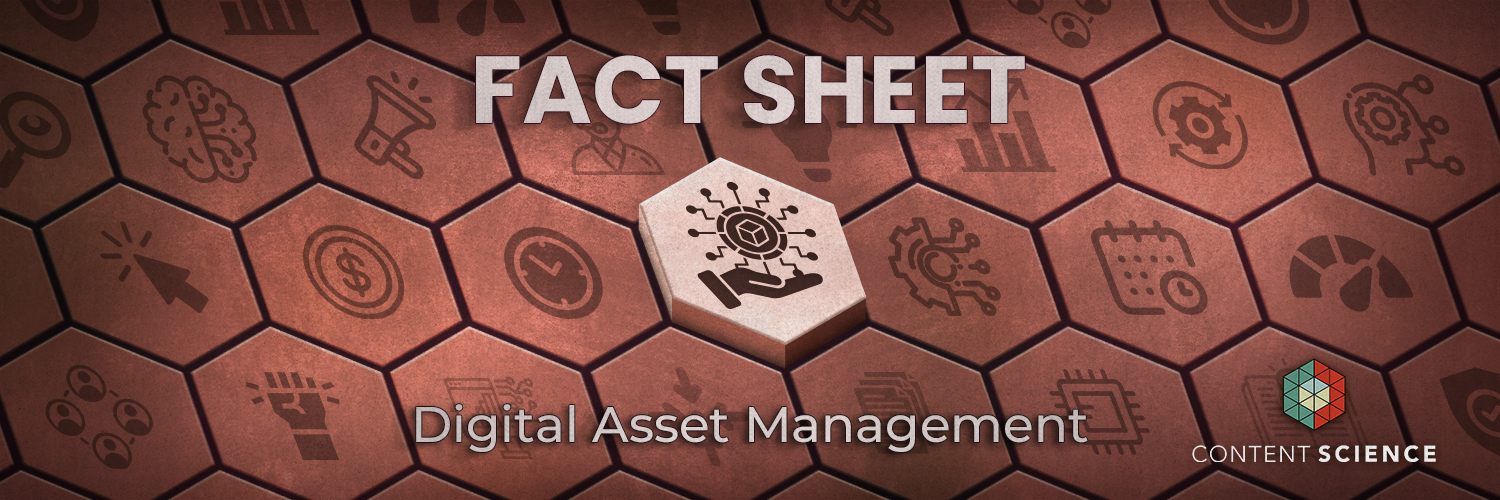
Content comes in many formats—words and text, podcasts and audio, photographs and images, videos, slides, whitepapers, e-books, and reports—and you need a system in place to manage it all. Whether you’re creating a little content or a lot, digital asset management is an important part of your overall content strategy.
Digital asset management (DAM) is a major category of content technology. To understand that in a broad sense, read our Content Technology Fact Sheet. To understand DAM and what it means in relation to content, we must first define it.
Digital asset management (DAM) is a business process for organizing, storing and retrieving rich media and managing digital rights and permissions. Rich media assets include photos, music, videos, animations, podcasts, and other multimedia content. – Tech Target
Colleen Jones, author of “Clout” and CEO of Content Science, notes that DAM is growing in importance: “We need more content assets than ever before because all business functions are going digital and demand highly dynamic, personalized, and optimized experiences. Optimizing an experience alone—with automated A/B testing driven by machine learning—can require hundreds of digital assets. Whoever can manage those assets well will have a competitive advantage.”
We continue to make investments at this [technology] level, including a CMS, DAM (digital asset management), analytics, curation, and marketing automation. These are all important tools for a digital content marketing program to succeed. – Ed Youngblood, Director of Content Strategy, Alcatel-Lucent Enterprise, CMO Council’s Marketing Magnified
To function effectively, DAM should be a foundation in your digital strategy and it should be integrated with other aspects of your existing technology. These mechanisms of engineering and evaluating are crucial for content success to obtain operational and intellectual control of your digital assets. Most companies rely on DAM software coupled with a small team with the capabilities to assess and manage those assets. Make no mistake, the DAM software market can be dizzying with many options on the market, so it’s good to do thorough research to match DAM software services with your needs. Capterra ranks the best of the bunch.
2.6 billion monthly active users on YouTube, 1.22 billion monthly active users on Instagram, and more than 2.96 billion monthly active users on Facebook. – Social Pilot
DAM as a technology strategy is up there with project management and communication–it’s critical from an operational sense. With digital files more and more the norm in content management, having a DAM system in place is no longer an opt-out option for most companies.
In SEO, the file names of images and files are also considered important search-relevant components. These can of course also be automatically adjusted and thus optimized by the DAM. – Tessa-Dam
Text optimization and web-text elements like subheaders and keywords are not the only factors contributing to SEO optimization. Identifying information for digital asset files decides if your content appears in web image searches and influences its SEO ranking.
A well-made DAM system should be able to automatically optimize file names and even metadata for a digital asset. A DAM system that can integrate with a Product Information Management (PIM) system enables search engines to pull relevant identifying information such as keywords, metadata, and file names and use them in their SEO ranking.
Optimizing metadata and identifying file information for a digital asset manually and at scale is a long, repetitive process that consumes your employees’ time. An effective DAM system automates these important SEO processes and frees up the time of your staff to address more important issues.
In the Digital Assets market, the number of users is expected to amount to 994.30m users by 2027. — Statista
Comparesoft explains and breaks down the four key stages of the digital asset lifecycle. Understanding this lifecycle helps content professionals avoid common pitfalls such as aging assets, high maintenance costs, and decreasing asset values.
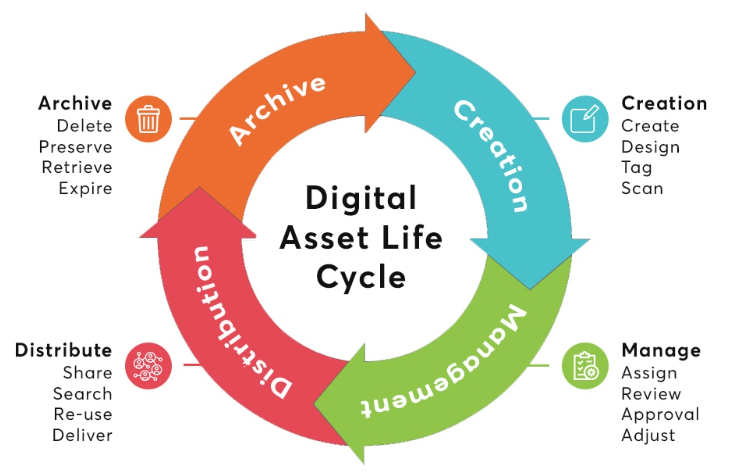
- Asset Creation: This is when a concept is brought to fruition resulting in a design, drawing, written document, photograph, or video. It may also be an action, such as scanning a paper document.
- Asset Management: Once created and recorded with a unique identifier, managing an asset begins. This includes the approval of a design or document, minor adjustments, or further updates.
- File Distribution: This stage involves the distribution of a digital asset to employees or the general public, through permission controls. Consider the government’s coronavirus messaging campaign in 2020. This involved countless digital assets, ranging from social media graphics, video addresses, and informative articles that would have first been sent to various teams for publishing.
- File Expiry/Archive: There comes the point where a digital asset reaches the end of its life. This is the time when an asset is no longer relevant to a campaign and therefore becomes outdated.
A commitment to improving your digital asset management is crucial for many reasons, including lowering costs and increasing productivity. A survey conducted by BusinessWire showed that 26% of workers aged 35-44 spent five hours a day looking for information, so there’s plenty of room for improvement.
…digital asset management is different than content or web content management and requires a different support structure (and training). It is an important cost—to establish and maintain this organizational infrastructure that is largely specific to the DAM. – Digital Asset Management News
There are costs associated with DAM technology, which can include everything from software to other systems integration to hosting to project management to data migration. The reality is, you can’t afford to not have some sort of system in place. However, depending on the scope, it likely won’t come cheap, and that’s not just in software. “If you want to implement your own digital video archive and rich media storage infrastructure, it’s going to cost you a lot in terms of technology, resources, and manpower,” says Rino Petricola, Vice President for digital media solutions at Oracle.
But the investment is a must to stay ahead of your competition, as the Global Digital Asset Management Market 2023-2027 report forecasts, “The digital asset management market is poised to grow by $11936.72 mn during 2023-2027, accelerating at a CAGR of 22.05% during the forecast period.”
While your CMS will let you categorize posts and pages, the DAM will let you categorize individual uploads like images, videos, etc. Industry-leading CMS solutions do offer analytics to keep track of traffic; again that data is attached to the page or post. The best DAMs will give you performance data on each individual object. – Oracle
Headless CMS solutions blur the lines between DAMs and CMSs. Reusable content is a cornerstone for effective content operations, particularly for those pursuing a dedicated omnichannel strategy. DAMs help reuse existing content by enabling quick and easy access to an organization’s digital library of assets.
Headless CMS solutions help free up the time of content creators by automating the processes for adapting existing content to different platforms. However, users of a Headless CMS require access to existing content and previously used materials.
While many Headless CMS solutions are adopting functions of a DAM, many organizations may still require both systems. Integrating a DAM and a Headless CMS provides users seamless access to and manipulation of existing content to create modern digital experiences for their customers.
Think of a DAM system as a marketing technology tool that enables you to connect your digital assets with customers—and by extension with revenue sources. – DigitalAssetManagement.com
Much like financial asset management, DAM is all about spreading the wealth and organizing all your digital assets in a cohesive way that makes sense for your company and content team. There are many tools out there to help you assess the level in which you need DAM and that help you determine its role in your digital experience ecosystem now and in the future. And avoiding folding in this vital element of your content strategy will delay your ability to mature through what Earley identifies as three levels of digital asset management strategy, using retail as an example:
- The first stage of digital asset management strategy maturity is directed toward risk mitigation and compliance.
- The second stage of digital asset management strategy maturity improves asset management at the product stock keeping unit (SKU) level and leverages technology to move toward a greater degree of publishing integration.
- The third stage of digital asset management strategy maturity supports the effective use of analytics and information architecture to track customer behavior, to influence shopper buying and opinion, and to predict future preferences and trends.
This third level showcases how your organization can harness DAM to deliver personalized user experiences that people will find useful, relevant, and influential.
Using DAM effectively can deliver knowledge and measurable cost savings, and offers valuable and meaningful effects for your digital strategy. Getting your digital house in order with an organizational system will speed the workflow and reduce errors of duplicate or missing files. Additionally, your DAM offers an array of modern benefits, including supporting highly personalized, optimized, and dynamic experiences that your users will return for again and again.
Both internal and external teams use DAM to collaborate, save time and reduce headaches. Internal teams use DAM to find the best, approved assets. They can also share those assets with external teams or agencies. – OpenAsset
The benefits of a DAM reach beyond just content creators. Various internal teams find value in easy access to materials and existing content. Remember, effectively using content is more than just publishing to audiences; it’s about providing additional value in all external and internal processes.
- Marketing Teams: These teams need easy access to content collateral such as logos, reports, and other digital assets necessary to their day-to-day functions. Tracking down the right permission and identifying the right file version hinder marketing efforts unnecessarily. DAMs make organizing, managing, accessing, and distributing these assets easy.
- Sales Teams: Making a sale often comes down to collecting and distributing the correct materials at the correct time. Sales teams may not have the time to check with content teams if an image, informational pamphlet, or graphic has been approved. Similarly, content teams must create new content and may not have time to respond to a sales team’s confirmation request. A reliable DAM enables all teams to access materials and feel confident that they are shareable.
- IT Teams: Maintaining servers and managing permissions for asset access and distribution can take up significant portions of an IT team’s time. Most DAMs store assets on a cloud, removing the need for IT teams to manage servers storing assets and allow permission-based access to the appropriate staff.
- Legal Teams: While legal teams will likely have their own processes for reviewing and signing off on materials, a DAM can make accessing approved materials easy. Storing legal-approved documentation for easy access can benefit high-level staff and HR teams and remove the need for legal teams to provide it themselves.
To measure the environmental impact of digital technology, we need to consider all the effects of a digital product life cycle: design, extraction and processing of raw materials, manufacture of components, assembly, transport, energy consumptions during its use and finally recycling. – Wedia Group
The idea of “the cloud” can lead people to think that the world is shifting away from a reliance on physical technology to store data and assets. However, the growth of created and stored data directly impacts the environment. Before a digital asset’s lifecycle begins, the technology that enables that digital asset is well underway.
Data centers require huge amounts of rare earth minerals to manufacture servers and enormous amounts of electricity to function. In 2023, fossil fuels produce most American electricity which are the primary contributors to American carbon emissions. Growing demand for data means more rare earth minerals mined and more fossil fuels burned.
Content bloat is a significant contributor to an organization’s environmental impact. A company’s growing data demand contributes to the growth of data centers and the amount of fossil fuels and rare earth minerals used in those data centers. While it may seem an insignificant change, reducing content bloat can help your organization’s environmental footprint as well as its overall quality of offered content.
Events, Resources, + More
The Ultimate Guide to End-to-End Content
Discover why + how an end-to-end approach is critical in the age of AI with this comprehensive white paper.
The Content Advantage Book
The much-anticipated third edition of the highly rated book by Colleen Jones is available at book retailers worldwide. Learn more!
20 Signs of a Content Problem in a High-Stakes Initiative
Use this white paper to diagnose the problem so you can achieve the right solution faster.
Upskill with Content Science Academy
Training for modern content roles through on-demand certifications + courses or live workshops.


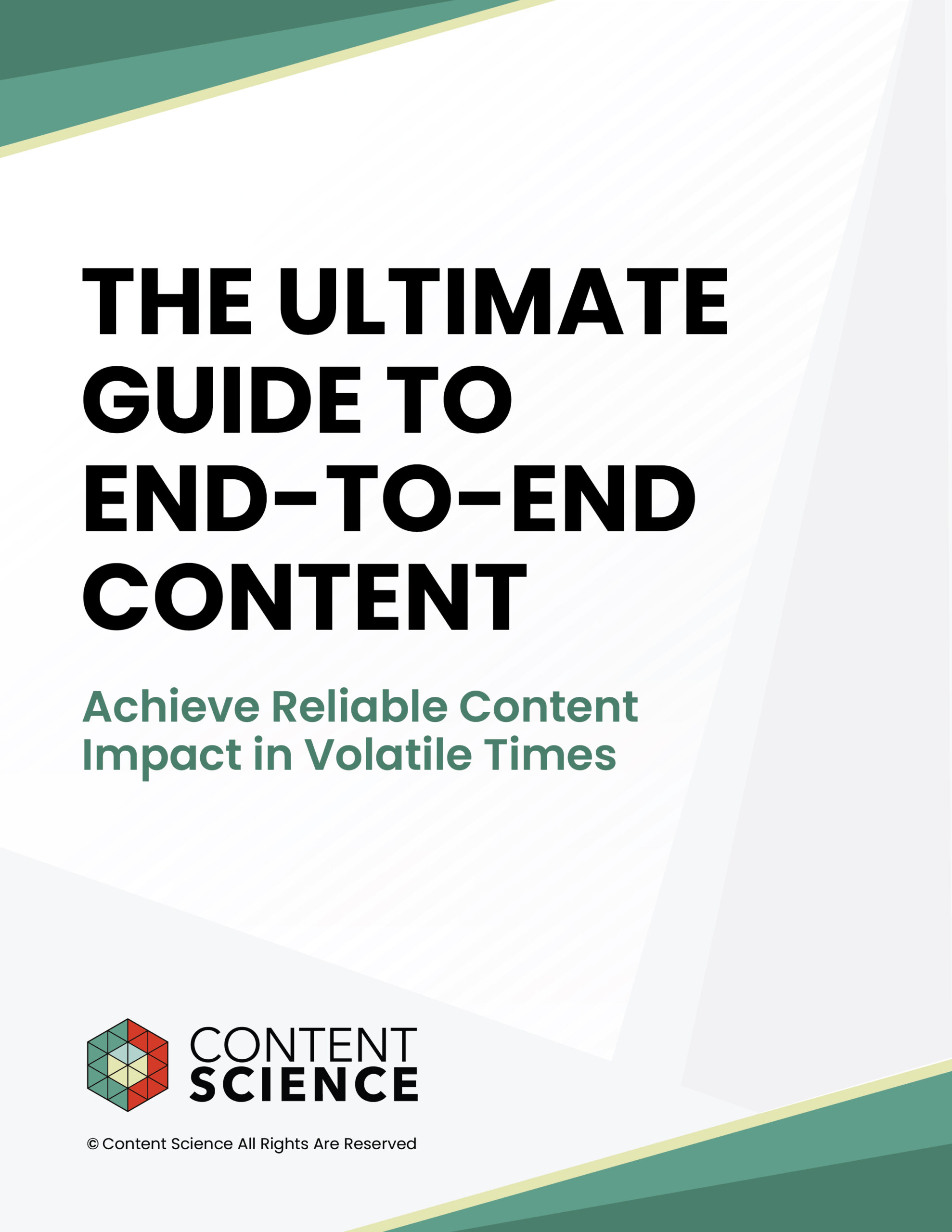
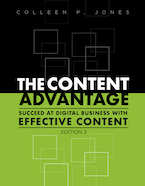

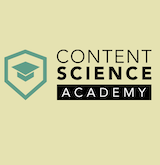
Comments
We invite you to share your perspective in a constructive way. To comment, please sign in or register. Our moderating team will review all comments and may edit them for clarity. Our team also may delete comments that are off-topic or disrespectful. All postings become the property of
Content Science Review.